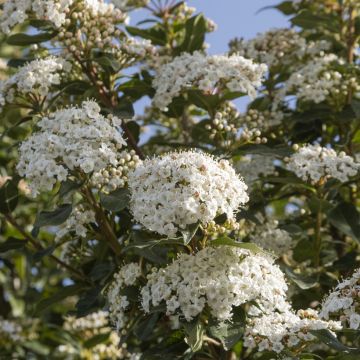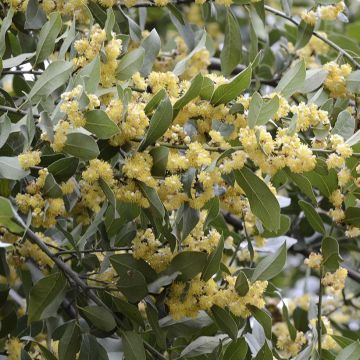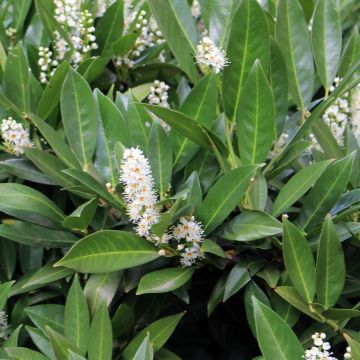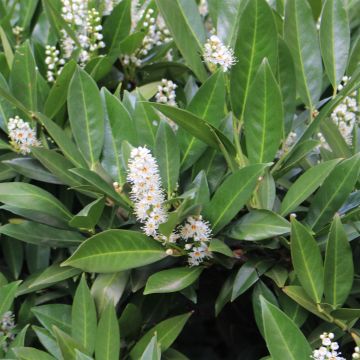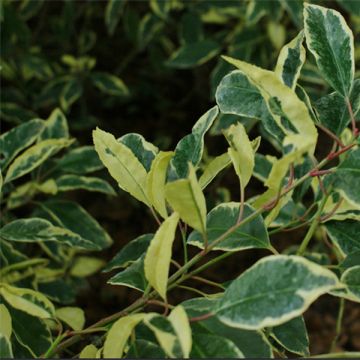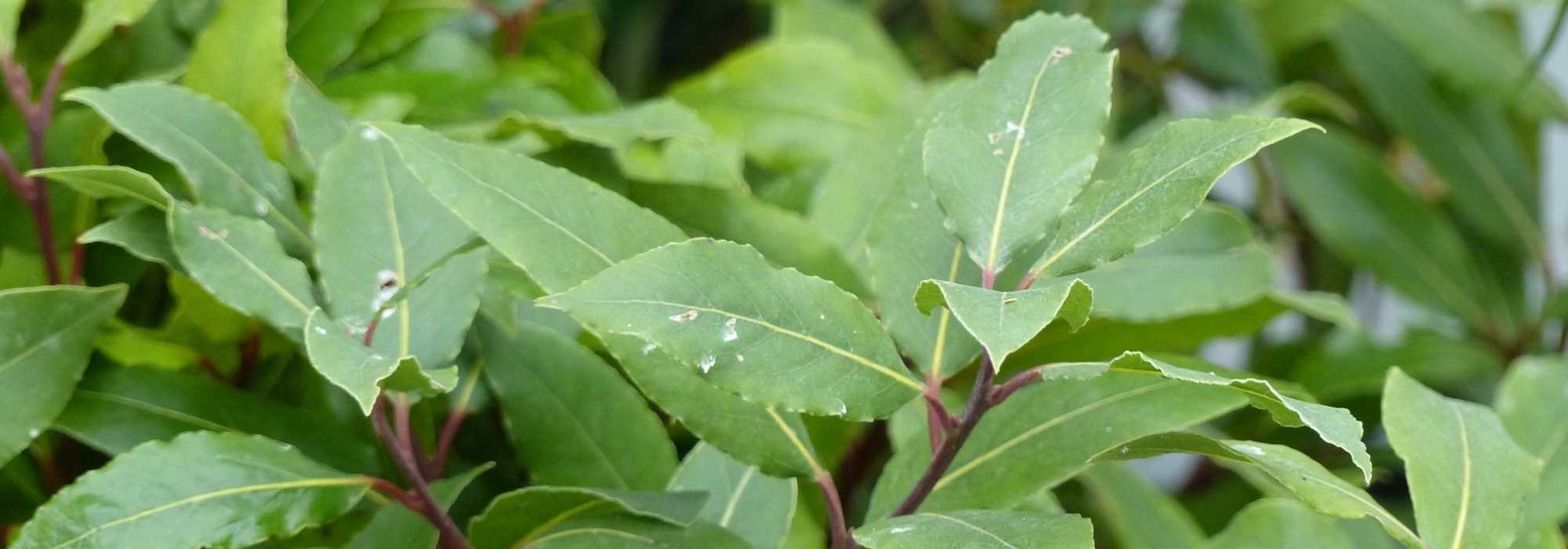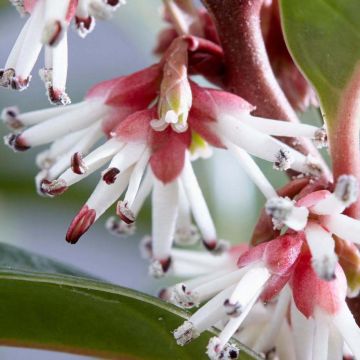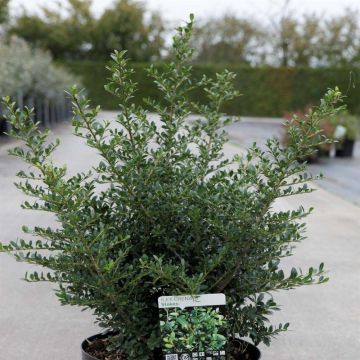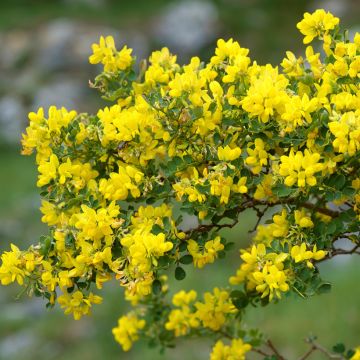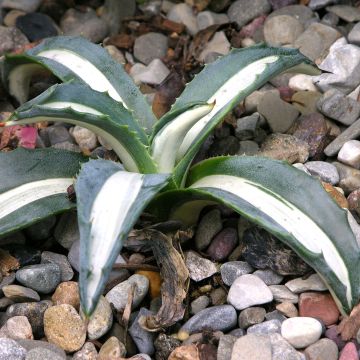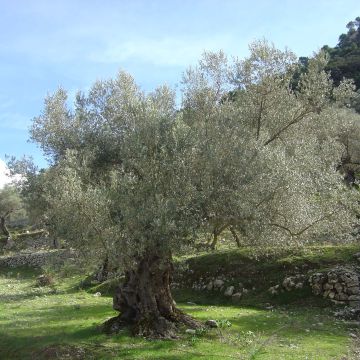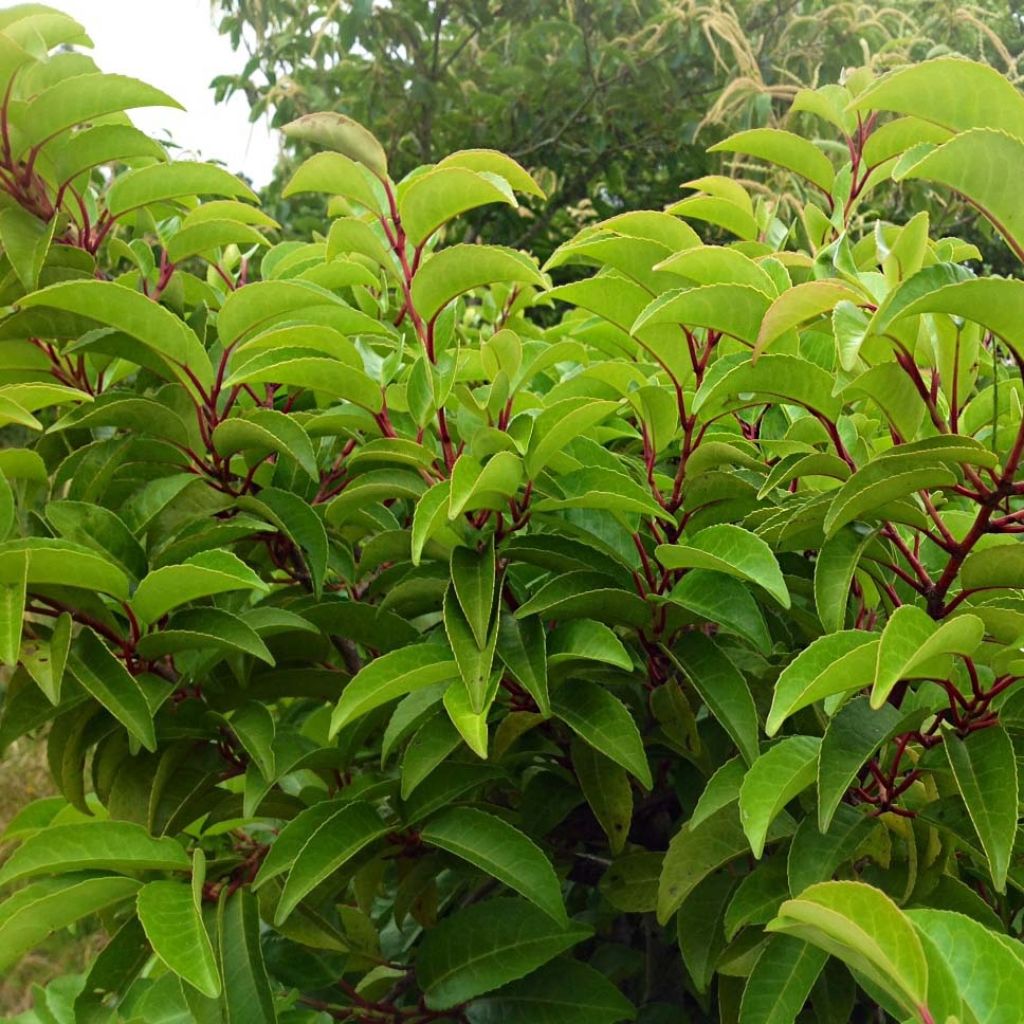

Prunus lusitanica Tico - Laurier des Açores
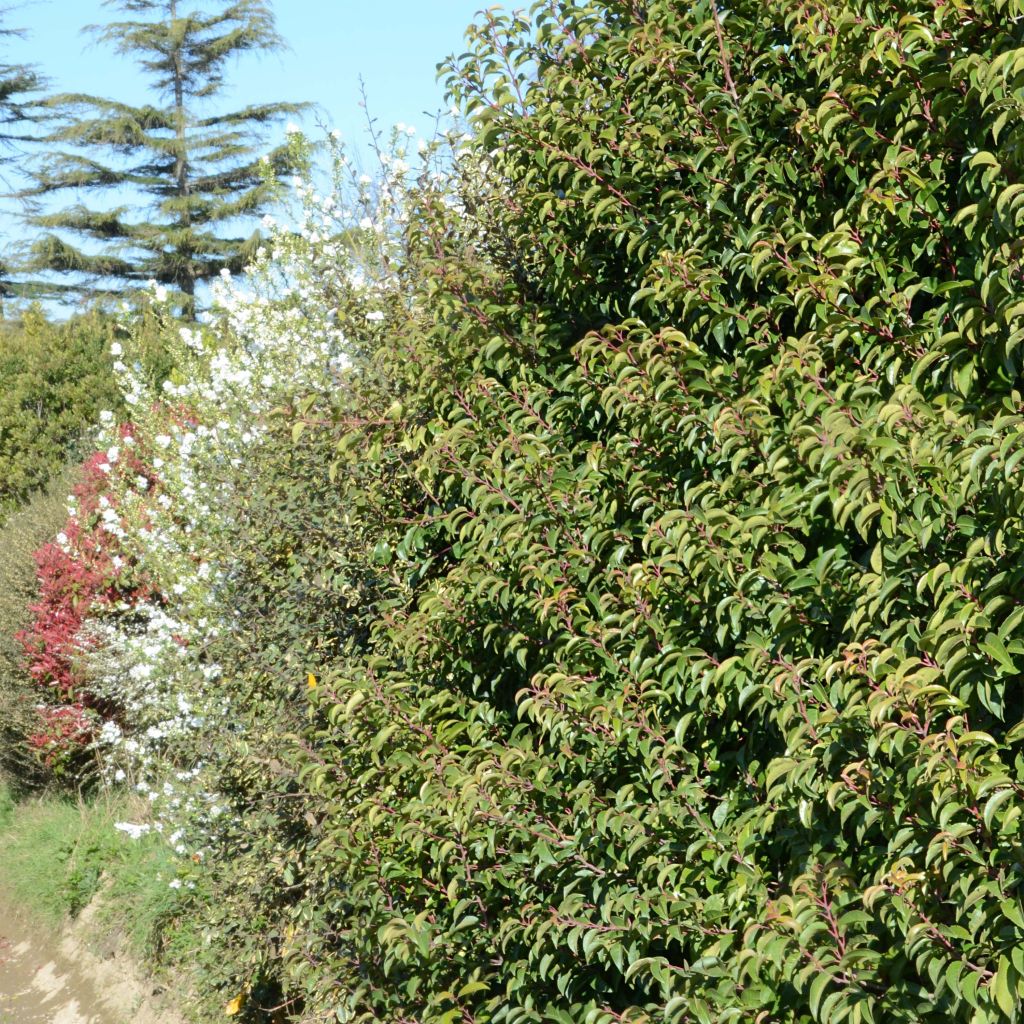

Prunus lusitanica Tico - Laurier des Açores
Prunus lusitanica ssp. azorica Tico (YBRAZO01)
Prunus lusitanica subsp. azorica Tico® (YBRAZO01)
Azores laurel, Portuguese Laurel
Just a question: why is this bush offered in such a small size, including at your colleagues'? Thank you in advance for your prompt response. Have a good day. NF.
Nathalie, 01/08/2020
Special offer!
Receive a €20 voucher for any order over €90 (excluding delivery costs, credit notes, and plastic-free options)!
1- Add your favorite plants to your cart.
2- Once you have reached €90, confirm your order (you can even choose the delivery date!).
3- As soon as your order is shipped, you will receive an email containing your voucher code, valid for 3 months (90 days).
Your voucher is unique and can only be used once, for any order with a minimum value of €20, excluding delivery costs.
Can be combined with other current offers, non-divisible and non-refundable.
Why not try an alternative variety in stock?
View all →This plant carries a 24 months recovery warranty
More information
We guarantee the quality of our plants for a full growing cycle, and will replace at our expense any plant that fails to recover under normal climatic and planting conditions.
Would this plant suit my garden?
Set up your Plantfit profile →
Description
Prunus lusitanica ssp azorica 'Tico' is a brand new variety of Azores Laurel with rather fast growth, whose colourful and harmonious vegetation brings a decorative touch to the range of evergreen shrubs for hedges in limestone soil. It is covered with shiny young leaves tinged with coppery bronze, turning light green and then bronze again in autumn, a colour that contrasts beautifully with their mahogany-red petioles. It also has, in late spring, elongated and frothy white clusters of flowers, whose fragrance drives pollinating insects crazy. These are followed by fairly decorative red and then black fruits. Very accommodating in terms of soil, and hardy, it is perfect in an informal or pruned hedge. A little more susceptible to cold than its cousin the cherry laurel, it is more resistant to drought, smaller, and a thousand times more ornamental.
The Azores Laurel, in Latin Prunus lusitanica subsp. Azorica, is a shrub belonging to the Rosaceae family. This subspecies of Portuguese Laurel is endemic to the Azores, where it is endangered. It has a more moderate growth than its parent, a less upright habit, more harmonious, and faster growth, and it appreciates limestone soils.
The cultivar 'Tico' was obtained in France in 2012. Not exceeding 3 metres (10 feet) in height and 2 metres (7 feet) in width, it has rapid growth, a slightly flared and trailing flexible habit, and develops red branches. Its leaves persist throughout the year. They are oval in shape, pointed at their tips, with dentate edges, and measure from 6 to 10 cm (2 to 4in) in length. Their colour evolves from spring bronze-orange to acidic green before taking on beautiful bronze hues in the cold. In May-June, sometimes as early as the end of April depending on the climate and the year, it produces a multitude of tiny white flowers, cup-shaped, 1cm (1in) in diameter, with protruding stamens. They are fragrant and honey-bearing, and gathered in narrow and pendant clusters, 12 to 15cm (5 to 6in) long. The fruits consist of small oval berries, 8mm (1in) in size, initially red turning dark purple and then black, which are highly toxic if ingested.
The Azores Laurel requires deep and loose soil, particularly in the warm regions of our country. It thrives in oceanic climates but adapts quite well to Mediterranean climates, and its hardiness allows it to be planted in many regions. It is advantageously used in evergreen hedges, pruned or unpruned, for example in association with Photinia, Eleagnus ebbingei, Cotoneaster lacteus, Abelia chinensis, and strawberry trees. This hedge, both diverse and wind-resistant, will provide shelter and cover for many birds and a precious source of food for bees and butterflies.
Tip: if necessary, prune just after flowering, preferably with secateurs to avoid shredding the foliage. This way, you will spare the flower buds that form during the summer. They will bloom the following spring.
Report an error about the product description
Prunus lusitanica ssp. azorica Tico (YBRAZO01) in pictures


Plant habit
Flowering
Foliage
Botanical data
Prunus
lusitanica subsp. azorica
Tico® (YBRAZO01)
Rosaceae
Azores laurel, Portuguese Laurel
Cultivar or hybrid
Other Laurels
View all →Planting and care
Prunus lusitanica Tico is preferably planted from February to May, in any deep, rather fertile, well-worked soil, even limestone, moist to dry in summer, in full sun, at a distance of 80 cm (32in) to 1m (3ft). In very cold regions, protect it from cold and strong winds. Prune after flowering, preferably with secateurs to avoid shredding the foliage and allow your shrub to flower the following spring (flower buds form in late summer and persist throughout winter). It can withstand temperatures as low as -15°C (5°F). It may be susceptible to attacks from aphids or scale insects in summer.
Planting period
Intended location
Care
Planting & care advice
-
, onOrder confirmed
Reply from on Promesse de fleurs
Similar products
Haven't found what you were looking for?
Hardiness is the lowest winter temperature a plant can endure without suffering serious damage or even dying. However, hardiness is affected by location (a sheltered area, such as a patio), protection (winter cover) and soil type (hardiness is improved by well-drained soil).

Photo Sharing Terms & Conditions
In order to encourage gardeners to interact and share their experiences, Promesse de fleurs offers various media enabling content to be uploaded onto its Site - in particular via the ‘Photo sharing’ module.
The User agrees to refrain from:
- Posting any content that is illegal, prejudicial, insulting, racist, inciteful to hatred, revisionist, contrary to public decency, that infringes on privacy or on the privacy rights of third parties, in particular the publicity rights of persons and goods, intellectual property rights, or the right to privacy.
- Submitting content on behalf of a third party;
- Impersonate the identity of a third party and/or publish any personal information about a third party;
In general, the User undertakes to refrain from any unethical behaviour.
All Content (in particular text, comments, files, images, photos, videos, creative works, etc.), which may be subject to property or intellectual property rights, image or other private rights, shall remain the property of the User, subject to the limited rights granted by the terms of the licence granted by Promesse de fleurs as stated below. Users are at liberty to publish or not to publish such Content on the Site, notably via the ‘Photo Sharing’ facility, and accept that this Content shall be made public and freely accessible, notably on the Internet.
Users further acknowledge, undertake to have ,and guarantee that they hold all necessary rights and permissions to publish such material on the Site, in particular with regard to the legislation in force pertaining to any privacy, property, intellectual property, image, or contractual rights, or rights of any other nature. By publishing such Content on the Site, Users acknowledge accepting full liability as publishers of the Content within the meaning of the law, and grant Promesse de fleurs, free of charge, an inclusive, worldwide licence for the said Content for the entire duration of its publication, including all reproduction, representation, up/downloading, displaying, performing, transmission, and storage rights.
Users also grant permission for their name to be linked to the Content and accept that this link may not always be made available.
By engaging in posting material, Users consent to their Content becoming automatically accessible on the Internet, in particular on other sites and/or blogs and/or web pages of the Promesse de fleurs site, including in particular social pages and the Promesse de fleurs catalogue.
Users may secure the removal of entrusted content free of charge by issuing a simple request via our contact form.
The flowering period indicated on our website applies to countries and regions located in USDA zone 8 (France, the United Kingdom, Ireland, the Netherlands, etc.)
It will vary according to where you live:
- In zones 9 to 10 (Italy, Spain, Greece, etc.), flowering will occur about 2 to 4 weeks earlier.
- In zones 6 to 7 (Germany, Poland, Slovenia, and lower mountainous regions), flowering will be delayed by 2 to 3 weeks.
- In zone 5 (Central Europe, Scandinavia), blooming will be delayed by 3 to 5 weeks.
In temperate climates, pruning of spring-flowering shrubs (forsythia, spireas, etc.) should be done just after flowering.
Pruning of summer-flowering shrubs (Indian Lilac, Perovskia, etc.) can be done in winter or spring.
In cold regions as well as with frost-sensitive plants, avoid pruning too early when severe frosts may still occur.
The planting period indicated on our website applies to countries and regions located in USDA zone 8 (France, United Kingdom, Ireland, Netherlands).
It will vary according to where you live:
- In Mediterranean zones (Marseille, Madrid, Milan, etc.), autumn and winter are the best planting periods.
- In continental zones (Strasbourg, Munich, Vienna, etc.), delay planting by 2 to 3 weeks in spring and bring it forward by 2 to 4 weeks in autumn.
- In mountainous regions (the Alps, Pyrenees, Carpathians, etc.), it is best to plant in late spring (May-June) or late summer (August-September).
The harvesting period indicated on our website applies to countries and regions in USDA zone 8 (France, England, Ireland, the Netherlands).
In colder areas (Scandinavia, Poland, Austria...) fruit and vegetable harvests are likely to be delayed by 3-4 weeks.
In warmer areas (Italy, Spain, Greece, etc.), harvesting will probably take place earlier, depending on weather conditions.
The sowing periods indicated on our website apply to countries and regions within USDA Zone 8 (France, UK, Ireland, Netherlands).
In colder areas (Scandinavia, Poland, Austria...), delay any outdoor sowing by 3-4 weeks, or sow under glass.
In warmer climes (Italy, Spain, Greece, etc.), bring outdoor sowing forward by a few weeks.






























